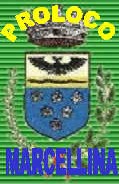 |
 |
 | ||
| |||||||||||
|
MARCELLINA
AND ITS HISTORY
In
Marcellina’s
territory there
are lots of
archaeological
remains, but
these ruins
give us the
possibility to
identify just
approximately
the
manufactured
products and
the structures.
Among these we
notify a big
complex of
terraced buildings.
During
the XI th
century
the first
decorative
phase of the
monastery of
“Santa Maria
in Monte
Dominici” started;
it was built on
the ancient
structures of a
Roman villa.
The monastery
reached its
highest power
in the XII th century,
when in 1153
Anastasio IV
‘s Papal bull
confirmed a
complex of
landed property
and 14 churches
placed along a
route from
Marcellina to
San Polo dei
Cavalieri, till
Poggio dei
Ronci. On
the
inside walls of
Santa Maria
church there
are some
frescoes that
belong to two
different
decorative
phases: the
first one, that
corresponds to
the splays of
the windows,
dates back to
the XI th
century; the
second one is
attributed to
the ancient
Byzantine of
the Roman
school and
dates back to
the first half
of the XIII th
century. Above
the altar there
is an icon of
the “Mother
with Child”:
some critics
consider it
belonging to
Roman style.
For the
ornaments and
other elements
this Madonna
reminds the
Teodato’s
picture
in Santa Maria
Antiqua, the
“Madonna dei
Mosaici” by
Giovanni VII
and the
Madonna
in Santa Maria
in Trastevere,
Rome. The
Romanesque
style church
tower
is
divided by
architraves
with windows
with two and
three lights in
overlapped
orders,
separated by a
frame of bricks,
on the four
sides, put as
saw-edged. Probably
the name
Marcellina
comes from
“Castrum
Marcellinis”,
Gregorio de
Marcellinis’
estate.
According to
the tradition
Castrum
Marcellinis was
destroyed by
San Paolo
monks’
army. This fact
caused the
drift of a big
number of
people towards
the monastery
of Santa Maria.
So, they formed
the existing
residential
complex of
Marcellina.
This first
community
continued to
live there till
1558. The whole
territory and
the ruined
castle came
back to
Marcellinis who
held their
dominion until
the end of the
XV th century.
The property
was given the
Orsini family
by the monks of
San Paolo; the
fact became
executive in
1429, when the
monks gave up
all the rights
of their
estates. In
1558, under
cardinal
Cesi’s
family
Marcellina
stopped to be
an independent
settlement;
its territory
was divided
into four parts:
Canale,
Monteverde,
Caolini and
Turrita. Later
the whole area
passed on to
the Princes
Borghese.
However they
never exercised
their power and
rights on the
inhabitants and
on the
landowners. Since
1700 new
rules governed
the
administration
of the small
countries
belonging to
the Papal
State. In
1827 Marcellina
became a San
Polo dei
Cavalieri’s
hamlet and the
two villages
were members of
Tivoli’s
Government. 15th
July 1909: this
is the date in
which
Marcellina
obtained its
independence as
a
self-governing
municipality. Since
then Marcellina
has the same
coat of arms
belonged to
Marcellinis’
family. This
represents a
link of the
present
Marcellina with
its past and
history!! Traslated by A.Antonini Thank by Proloco for these first History english-page |
| |||||||||||||||||||||